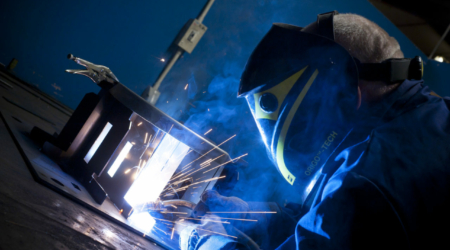In this digital age, robotics are becoming increasingly relevant. For businesses across the world, technological advances are making operations simpler and paving the way for increased profits in the future. The manufacturing industry has always relied on technology and innovative engineering to evolve operations and production practices. Now, manufacturers from all over the world are taking advantage of new technology to assist in warehousing and distribution, as well as manufacturing operations. This appears to be having positive effects on expenses and profits and many companies are embracing the technology now available to us.
Amazon – a global leader in manufacturing and distribution
Amazon is well known for its openness to innovation in the world of manufacturing and distribution. This is likely to be a contributing factor in the huge global success of the company. Since 2017, Amazon has utilised over 30,000 robots around the world in their warehouses to assist with order fulfilment. Distribution is a huge part of the company’s selling point, their ability to deliver goods to customers quickly is often why many people choose them over other retailers. The introduction of robotics into the company is said to have saved them millions of dollars while also reducing the space needed in their warehouses.
Could robots take over?
Many employees fear that their roles in the manufacturing industry may be at risk as a result of the advanced robotics that we now have at our fingertips. Mujin, a Japenese company recently revealed a prototype of a fully automated warehouse, run entirely by robots. The robots were able to unload a shipping container filled with goods and transport goods through the warehouse without any human intervention. For the most part, the prototype performs well but the company are still tweaking the design as some goods were damaged during the demonstration of the prototype. However, with innovation like this being revealed, the fear of robots taking the jobs of workers is a valid one. For manufacturers and distributors, this breakthrough in technology is hugely important.
Technology such as AMRs (Autonomous Mobile Robots) is also being used in the industry. AMRs can be used on cloud-based systems that allow them to be controlled and also move and track stock as required. A number of distributors around the globe, such as DHL, have opted to use AMRs in their operations.
It is understandable why some companies are choosing to use robotics in their distribution instead of humans, as from a business perspective, robotics in certain areas can come with fewer risks than employing humans. For example, robots are able to transport larger amounts of goods, are not susceptible to life-threatening injuries, and don’t need to take lunch breaks. However, it is important to remember that it is unlikely robots will fully replace human employees in the manufacturing industry. The advancement in technology may see some companies make cuts to human workers to make way for robots, but humans are still needed to operate them, and probably will be for a very long time. For example, Amazon is probably one of the companies utilising robotics in their operations the most, but they still employ over 200,000 human employees.
Humans and robots working in unison
Although it sounds like a work of fiction, some companies are now equipping employees with exoskeletons to assist with warehouse duties. An exoskeleton is a wearable piece of robotic technology that a human can wear to make certain tasks easier. For example, in a warehouse or manufacturing environment, an exoskeleton can be very helpful in assisting employees to move large amounts of weight. An exoskeleton allows a human to lift huge amounts of weight with no strain at all on the body, so it’s easy to see why this is an attractive piece of technology in a warehouse environment.
Is a total transformation in distribution and manufacturing practices imminent?
Robots have been used in the manufacturing industry for decades, ever since the first robotic arm was introduced in the early 1950s. Manufacturing and distribution as industries do rely on technological advances to progress and compete in the market, but this doesn’t necessarily mean that all humans will be replaced by robots any time soon. So far, robotics are merely a useful tool in the industry and although the recent advances have been promising, humans are still more capable. In terms of increasing efficiency in production and manufacturing, reducing the number of worker injuries, and assisting with distribution, robots are great. However, it is important to recognise that what they lack is the ability the truly think in a human-like manner.
It is likely that as many companies focus entirely on online sales and begin to close physical stores, that distribution practices will have to improve across all sectors. With this shift, it is very plausible to think that robotics will play a larger part in both manufacturing and distribution.









